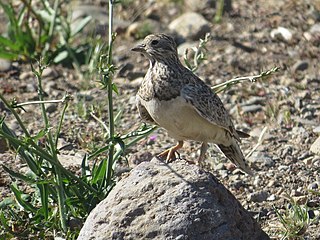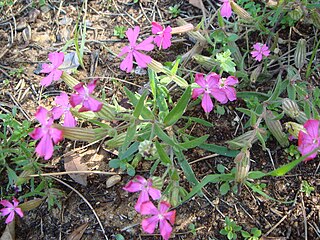
A pollinator is an animal that moves pollen from the male anther of a flower to the female stigma of a flower. This helps to bring about fertilization of the ovules in the flower by the male gametes from the pollen grains.

Petals are modified leaves that surround the reproductive parts of flowers. They are often brightly colored or unusually shaped to attract pollinators. All of the petals of a flower are collectively known as the corolla. Petals are usually accompanied by another set of modified leaves called sepals, that collectively form the calyx and lie just beneath the corolla. The calyx and the corolla together make up the perianth, the non-reproductive portion of a flower. When the petals and sepals of a flower are difficult to distinguish, they are collectively called tepals. Examples of plants in which the term tepal is appropriate include genera such as Aloe and Tulipa. Conversely, genera such as Rosa and Phaseolus have well-distinguished sepals and petals. When the undifferentiated tepals resemble petals, they are referred to as "petaloid", as in petaloid monocots, orders of monocots with brightly colored tepals. Since they include Liliales, an alternative name is lilioid monocots.

The seedsnipes are a small family, Thinocoridae, of small gregarious waders which have adapted to a herbivorous diet. The family is divided into two genera, Attagis and Thinocorus, each containing two species. The family has a South American distribution, in the Andean and Patagonian regions. The relationships with other families within the order Charadriiformes are uncertain; it has been suggested that the plains wanderer of Australia, the jacanas and the painted snipes are their closest relatives. The plains wanderer in particular has a similar feeding ecology, although differs markedly in breeding biology. The family's common name is misleading, as they do not resemble true snipe, having short bills on small heads, and seeds do not form a major part of the diet. One species Thinocorus rumicivorus is however known to feed on the fleshy flower petal appendages of Calceolaria uniflora, a species of Scrophularaceae. In the process of feeding on these sugar rich appendages, they also pollinate the flowers.

Pollination is the transfer of pollen from an anther of a plant to the stigma of a plant, later enabling fertilisation and the production of seeds, most often by an animal or by wind. Pollinating agents can be animals such as insects, birds, and bats; water; wind; and even plants themselves, when self-pollination occurs within a closed flower. Pollination often occurs within a species. When pollination occurs between species, it can produce hybrid offspring in nature and in plant breeding work.

A sporophyte is the diploid multicellular stage in the life cycle of a plant or alga which produces asexual spores. This stage alternates with a multicellular haploid gametophyte phase.

The Marantaceae are a family, the arrowroot family, of flowering plants consisting of 31 genera and around 530 species, defining it as one of the most species-rich families in its order. Species of this family are found in lowland tropical forests of Africa, Asia, and the Americas. The majority (80%) of the species are found in the American tropics, followed by Asian (11%) and African (9%) tropics. They are commonly called the prayer-plant family and are also known for their unique secondary pollination presentation.

Zoophily, or zoogamy, is a form of pollination whereby pollen is transferred by animals, usually by invertebrates but in some cases vertebrates, particularly birds and bats, but also by other animals. Zoophilous species frequently have evolved mechanisms to make themselves more appealing to the particular type of pollinator, e.g. brightly colored or scented flowers, nectar, and appealing shapes and patterns. These plant-animal relationships are often mutually beneficial because of the food source provided in exchange for pollination.

Ornithophily or bird pollination is the pollination of flowering plants by birds. This sometimes coevolutionary association is derived from insect pollination (entomophily) and is particularly well developed in some parts of the world, especially in the tropics, Southern Africa, and on some island chains. The association involves several distinctive plant adaptations forming a "pollination syndrome". The plants typically have colourful, often red, flowers with long tubular structures holding ample nectar and orientations of the stamen and stigma that ensure contact with the pollinator. Birds involved in ornithophily tend to be specialist nectarivores with brushy tongues and long bills, that are either capable of hovering flight or light enough to perch on the flower structures.

Pollination syndromes are suites of flower traits that have evolved in response to natural selection imposed by different pollen vectors, which can be abiotic or biotic, such as birds, bees, flies, and so forth through a process called pollinator-mediated selection. These traits include flower shape, size, colour, odour, reward type and amount, nectar composition, timing of flowering, etc. For example, tubular red flowers with copious nectar often attract birds; foul smelling flowers attract carrion flies or beetles, etc.

The least seedsnipe is a xerophilic species of bird in the Thinocoridae family.

Impatiens sakeriana is a perennial species of flowering plant in the family Balsaminaceae. It is native to Cameroon and Equatorial Guinea and grows in mountain forest understory habitat at altitudes up to 3000 meters. I. sakeriana is most often cited for its role in sunbird pollination. It can be locally common in parts of its range, but its habitat is threatened by agriculture.

Comesperma is a genus of shrubs, herbs and lianas in the family Polygalaceae. The genus is endemic to Australia. It was defined by the French botanist Jacques Labillardière in his 1806 work Novae Hollandiae Plantarum Specimen. The genus name is derived from the Ancient Greek words come ("hair") and sperma ("seed"), and relates to the seeds bearing tufts of hair. The genus is distributed over southern Australia, particularly in the southwest of Western Australia, where 19 species are found. 24 species have been described.
The enzyme isoprene synthase catalyzes the chemical reaction

Pilostyles is a genus of flowering plants in the family Apodanthaceae. It includes about 11 species of very small, completely parasitic plants that live inside the stems of woody legumes. Plants of this genus are sometimes referred to as stemsuckers.

Ecological speciation is a form of speciation arising from reproductive isolation that occurs due to an ecological factor that reduces or eliminates gene flow between two populations of a species. Ecological factors can include changes in the environmental conditions in which a species experiences, such as behavioral changes involving predation, predator avoidance, pollinator attraction, and foraging; as well as changes in mate choice due to sexual selection or communication systems. Ecologically-driven reproductive isolation under divergent natural selection leads to the formation of new species. This has been documented in many cases in nature and has been a major focus of research on speciation for the past few decades.
Hubertus Antonius van der Aa was a Dutch mycologist who described several genera and species of fungi. He studied at Utrecht University where he received his PhD in 1973 with the dissertation Studies in phyllosticta I.

Walsura trifoliolata is a tree in the family Meliaceae. The correct scientific name is unresolved up to date, where some name the plant as Heynea trifolia and some others as Walsura trifoliolata. The specific epithet trifoliolata is due to its trifoliate leaves. The plant is native to India and Sri Lanka.

Strychnos camptoneura is a species of plant in the Loganiaceae family. It is native to Camaroon, the Central African Republic, the Democratic Republic of the Congo, Gabon, Ivory Coast, Liberia, Nigeria, the Republic of the Congo and Zaire.

Silene stockenii is a species of flowering plant in the Caryophyllaceae first described in 1973. The specific epithet is named after Christopher Maitland Stocken, who discovered it in 1962 in Bornos. It is native to Spain, where it is endemic to grasslands growing in calcareous soil on formations made from calcarenite west of Cádiz in Andalusia. It is currently listed as critically endangered. In 1993, the number of individuals belonging to this species was estimated to be below 2000.

Pollen theft, also known as pollen robbery or floral larceny, occurs when an animal actively eats or collects pollen from a plant species but provides little or no pollination in return. Pollen theft was named as a concept at least as early as the 1980, and examples have been documented well before that. For example, native honey bees were documented 'stealing' large amounts of pollen from the large, bat-pollinated flowers of Parkia clappertoniana in Ghana in the 1950s. Nevertheless, pollen theft has typically received far less research attention than nectar robbing, despite the more direct consequences on plant reproduction.























